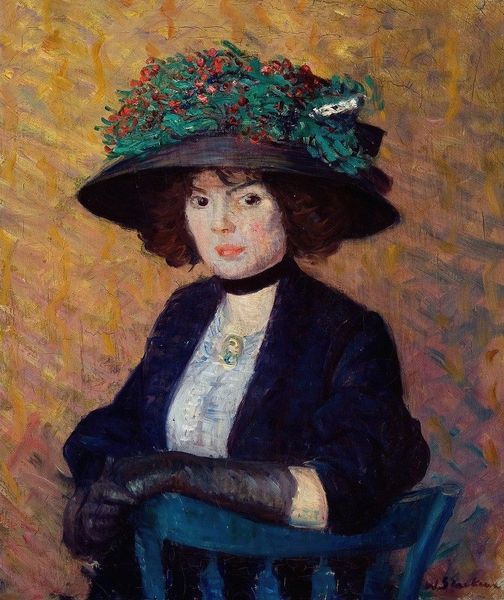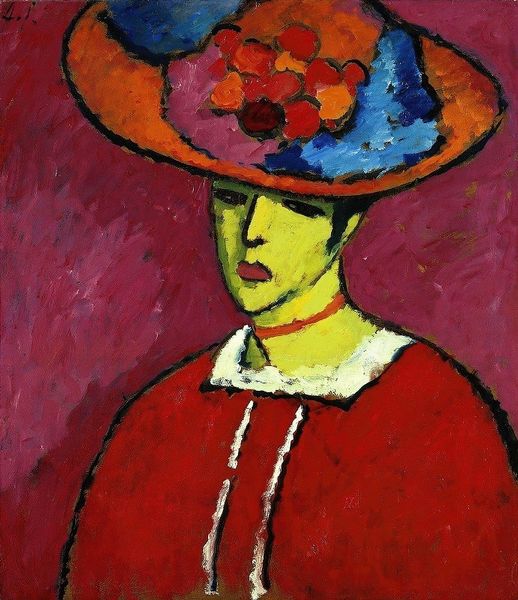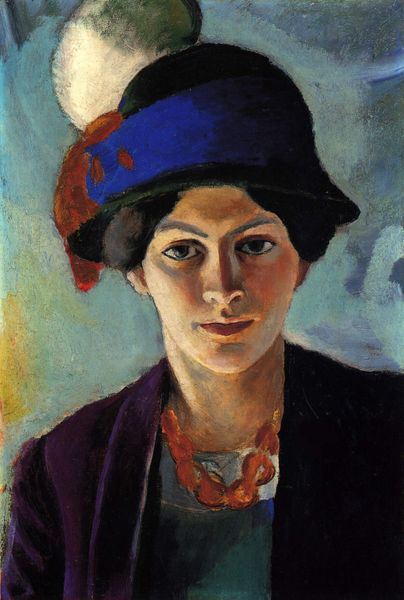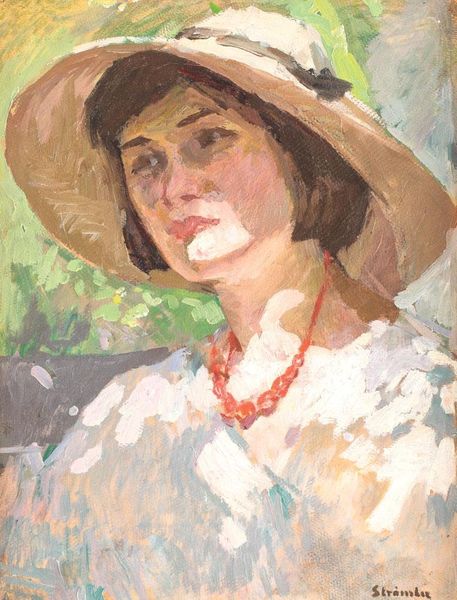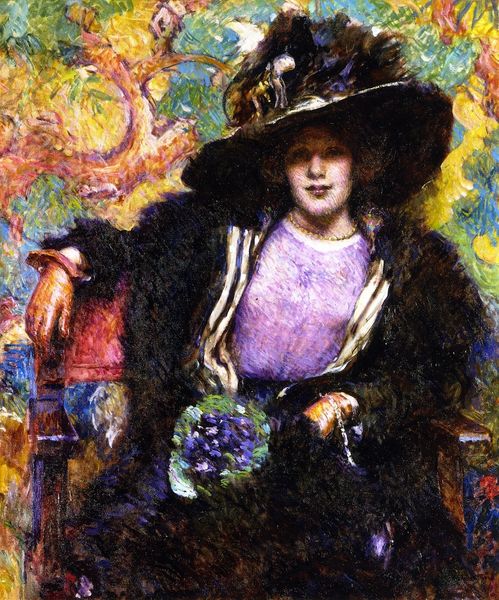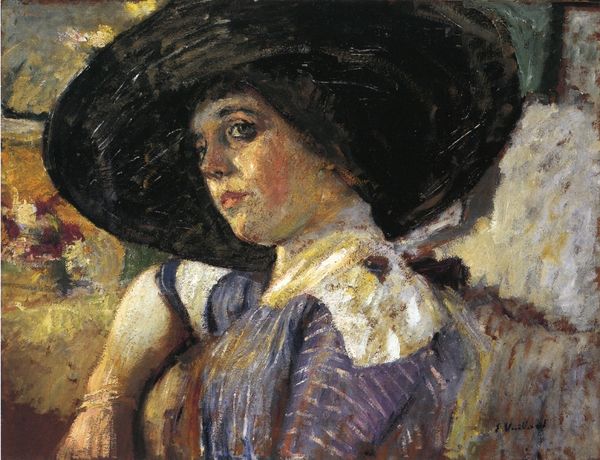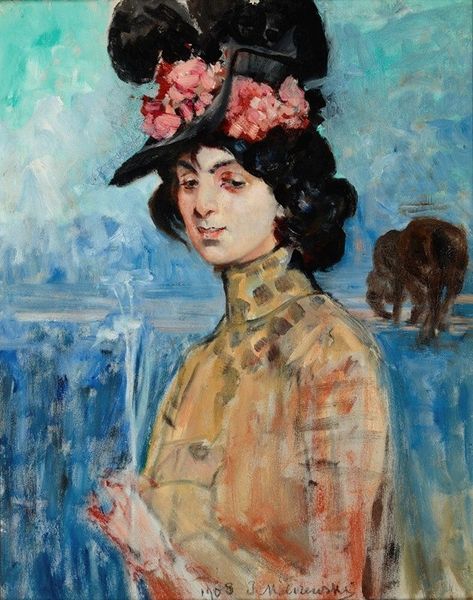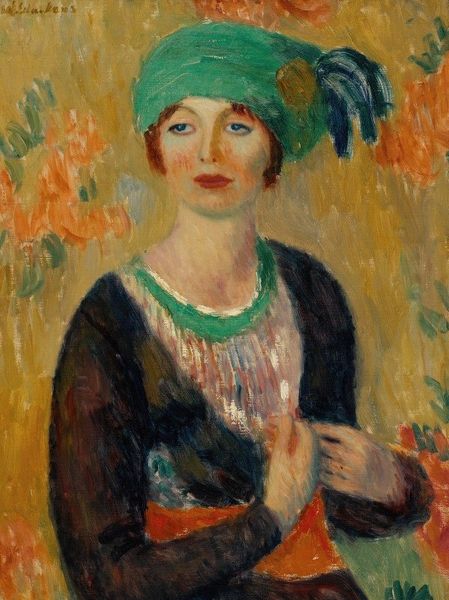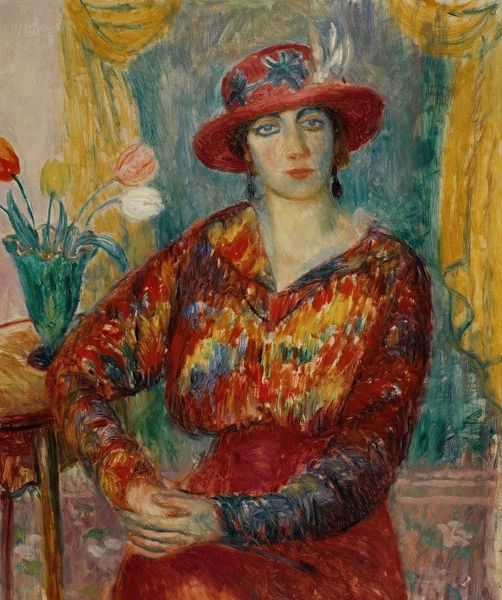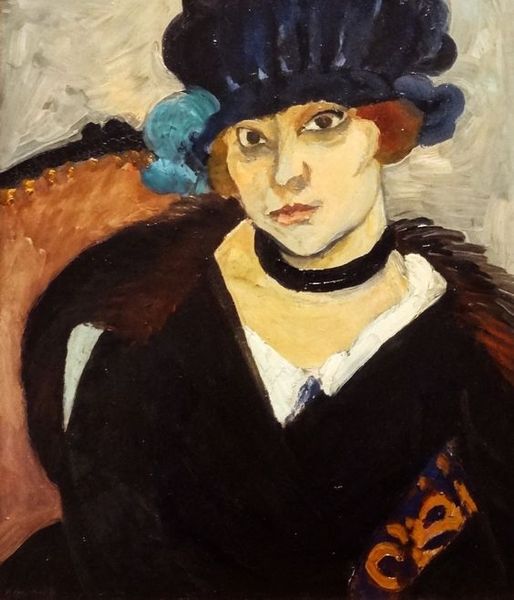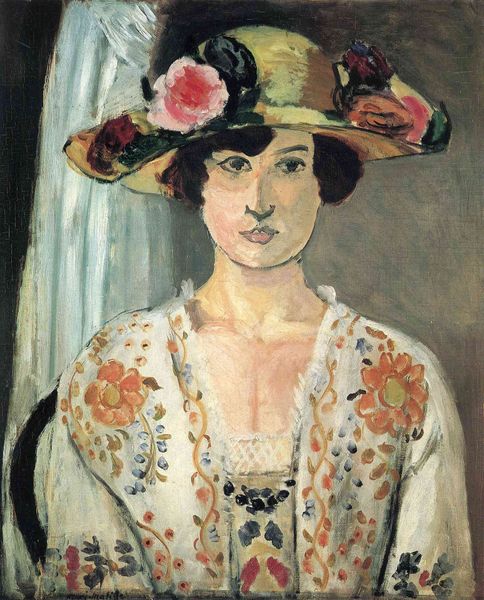
Copyright: Public domain US
Curator: Jean Metzinger’s "Femme au Chapeau," painted in 1906, showcases the artist's early experimentation with color and form, teetering on the edge of post-impressionism. It’s oil on canvas. Editor: My first impression is simply… vibrant. It's almost dizzying, the way he uses those tiny strokes of color to build up the image. The pointillist technique gives it a fantastic energy, but also, for me, evokes a sense of confinement, like looking at the world through a kaleidoscope. Curator: Metzinger's influences from Seurat and Signac are obvious in the brushwork, but it's how he diverges from pure pointillism that's key. The painting appears as prefiguring a larger societal change that took place during La Belle Époque. We should consider here also that such an elegant sitter like this could indicate the rise of powerful women at this historical turn. Editor: I see the historical context there. It’s like Metzinger is capturing a shift, not just in art but in society. That hat, for example, isn’t just a fashion statement. To me it speaks to changing gender dynamics, a sort of self-fashioned armor women started wearing in a still male-dominated context. Curator: Exactly. This work reflects on impressionistic explorations into how light affects the appearance of objects, however it seems like here light refracts and dances over her features in a mosaic fashion, fragmenting and distorting at the same time. Do you think he was aiming to undermine established hierarchies? Editor: Undermining, maybe not explicitly. The overall effect is of a fractured subjectivity, or rather an expression of identity built upon layers of perceptions and social signals. It’s visually captivating but slightly unsettling. We should also note here the materiality of oil paints – the application with such thick impasto speaks of an intent towards three-dimensionality and sculptural depth. Curator: It’s that tension between the familiar and the distorted that makes it compelling. It also reflects anxieties about rapid modernization and how to respond to its impact through visual art. The way she's both present and slightly fragmented invites multiple interpretations and opens space for reevaluations in a historical context. Editor: Agreed. I am definitely leaving this encounter intrigued by how early-20th century painters dealt with contemporary identity-related notions in a society of change.
Comments
No comments
Be the first to comment and join the conversation on the ultimate creative platform.
